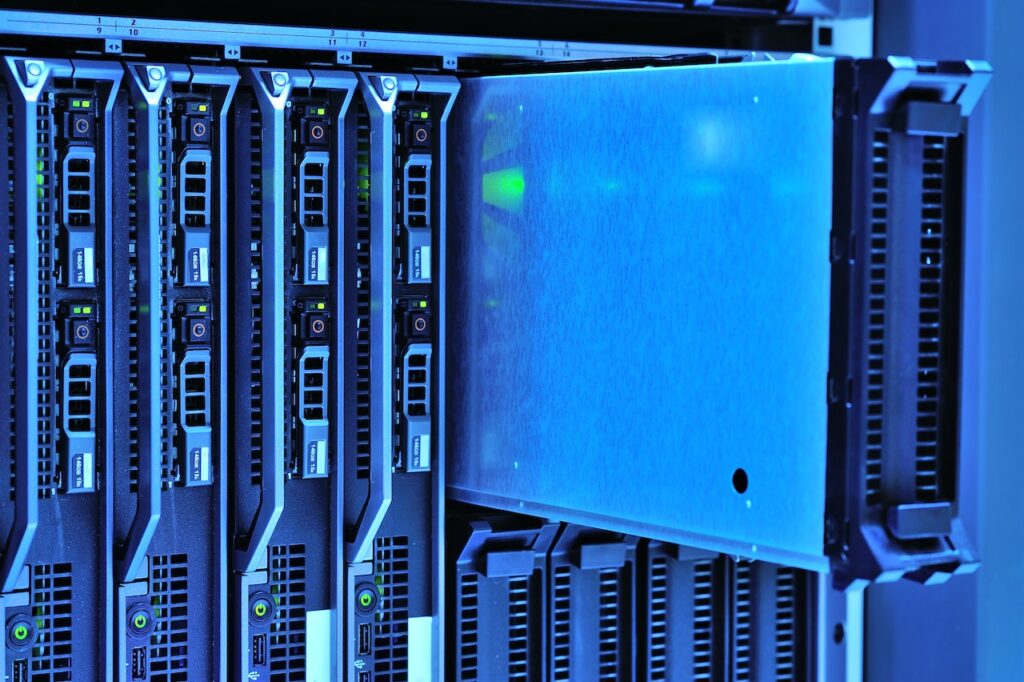If you have been following the news, you will realize that artificial intelligence (AI) now stands at the forefront of computer science, endeavoring to create systems and machines capable of emulating human intelligence, encompassing perception, reasoning, learning, decision making, and natural language processing. The applications of AI are ubiquitous, permeating various domains including healthcare, education, finance, manufacturing, entertainment, and security.
A notable example of AI transforming the healthcare sector is IBM’s Watson, a supercomputer that uses AI for data analysis and clinical decision-making. Watson can process vast amounts of medical literature and data to assist doctors in diagnosing and treating patients.
In the education sector, AI-powered educational platforms like Duolingo utilize AI algorithms to tailor learning experiences for individual users, adapting to their pace and preferences.
Cloud vs. On-Premise
However, the development and deployment of AI applications are intricate tasks demanding significant computational resources, specialized hardware, and meticulous management of sensitive data. A pivotal decision that AI developers and users face is determining the optimal hosting environment for their AI applications: the cloud or on-premise.
In this blog post, we compare and contrast these two options, taking into consideration critical factors such as cost, performance, scalability, reliability, security, privacy, and control.

Cost Considerations
When deliberating between the cloud and on-premise solutions, cost stands out as a significant consideration. Cloud services offer a pay-as-you-go model (based on the resources used, such as CPU hours, GPU hours, storage space, or data transfer), providing flexibility and cost-effectiveness for variable or unpredictable workloads. In the long run, however, it can be expensive especially if you have large or steady workloads, or if you need specialized hardware or software.
On-premise solutions, on the other hand, necessitate a substantial initial investment for hardware and software. They also incur additional costs for power consumption, cooling systems, physical space, maintenance staff, security staff, and software licenses. This fixed-cost model can be costly from the start, but it offers more predictable and lower operational costs over time. Furthermore, depending on your location, you may be able to take advantage of depreciation tax benefits and amortize your investments.
Advantage: Cloud
Performance Evaluation
Performance is a pivotal factor in the context of AI applications. AI computations often involve complex operations and large datasets, necessitating an environment that can handle such demands efficiently.
Cloud solutions provide a high level of performance due to its massive scale and availability of advanced hardware and software. With cloud solutions, you can access a variety of resources on demand without having to worry about capacity planning or provisioning. You can also benefit from the continuous updates and improvements made by the cloud providers.
In contrast, on-premise solutions offer a lower level of performance due to its limited scale and resources. Unless you put in the investments, on-premise hardware and software may not be as advanced or optimized as those in the cloud. In addition, you will have to deal with the challenges of constantly upgrading and maintaining your systems, which may cause downtime or compatibility issues.
Advantage: Cloud
Scalability
Scalability is a critical consideration, especially for AI applications, which often experience fluctuating workloads. As such, you will need a system that can handle increasing or decreasing workloads without compromising its quality or performance.
Cloud solutions provide a high level of scalability due to its elastic nature and distributed architecture, so you do not have to worry about overprovisioning or underutilization. Furthermore, the latency and availability of your applications can be improved by leveraging the global network of data centers and edge locations offered by the cloud providers.
In contrast, on-premise solutions offer a lower level of scalability due to its rigid nature and centralized architecture. In order to meet peak demands, you have to purchase enough hardware and software, which can result in wasted resources during low periods (or insufficient capacity if your purchased architecture is still unable to cope). In addition, your own network infrastructure may not be as fast or reliable as those in the cloud.
Advantage: Cloud
Reliability
Reliability is paramount for AI applications, as they often involve critical tasks that require high accuracy and availability.
Cloud solutions provide a high level of reliability due to its redundant design and fault-tolerant mechanisms, such as backups, load balancing, automatic recovery, and disaster recovery. Furthermore, you can take advantage of the service level agreements (SLAs) and guarantees provided by the cloud providers, which offer compensation for any downtime or performance issues.
In contrast, on-premise solutions offer a lower level of reliability due to its vulnerable design and lack of redundancy. Apart from having to manage complex and costly backup systems, load balancing, recovery, and disaster recovery strategies on your own, you also have to bear the full responsibility and risk for any downtime or performance issues, which can affect your reputation and revenue.
Advantage: Cloud
LogicMonitor’s Cloud 2025 survey revealed that global IT decision makers anticipate a decline in on-premises (on-prem) workloads over the next five years amidst accelerating shifts to the cloud.
Security Considerations
The security of data and applications are of paramount concern, particularly when dealing with sensitive, confidential, or regulated data that require strict compliance and governance.
Cloud solutions provide a high level of security due to its advanced technologies and best practices. Depending on what is offered by the cloud provider, you can benefit from the encryption, authentication, authorization, firewall, monitoring, auditing, and logging features, which safeguard data and applications from external and internal threats. Cloud providers may also have obtained the certifications and accreditations that demonstrate their adherence to various industry standards and regulations.
In contrast, with an on-premise deployment, you’re pretty much on your own when it comes to implementing encryption, authentication, authorization, firewall, monitoring, auditing, and logging features. You will also have to obtain your own certifications and accreditations, which may be challenging and expensive.
Advantage: Cloud
A survey by Deloitte revealed that 23 percent of respondents ranked “cybersecurity vulnerabilities” as their No. 1 overall AI/cognitive concern. You can download the PDF here.
Privacy Concerns
Privacy is a vital aspect, especially when dealing with personal or proprietary data that require consent and transparency.
Cloud solutions provide a low level of privacy due to its shared nature and third-party involvement. You have to entrust your data and applications to the cloud provider, who may have access to the data for various purposes, such as maintenance, optimization, or analytics. As a result, you may also have to comply with the terms and conditions, policies, and laws of the cloud providers and their jurisdictions, which may not align with your own preferences or requirements.
In comparison, on-premise solutions offer a high level of privacy because you have full control and ownership of your data and applications. You can decide how you want to use, store, or share the data. This, in turn, grants you more flexibility and autonomy in complying with the required terms and conditions, policies, and laws where you operate.
Advantage: On-Premise
Control and Customization
Control and customization are crucial, especially for AI applications with specific or complex requirements that need fine-tuning or optimization.
Due to its standardized nature and vendor lock-in, cloud solutions offer a low level of control. Usually, you have to adapt to the predefined options and features offered by the cloud provider, which may not suit your needs and preferences. Flexibility is further limited by your dependence on the cloud provider for changes and updates to your systems.
On-premise solutions, in comparison, provide a high level of control as you can customize your systems and resources based on your needs and preferences. Furthermore, you can make changes and updates according to your pace of innovation and discretion.
Advantage: On-Premise
So, which is better?
The choice between hosting AI applications in the cloud or on-premise is not straightforward, with each option presenting distinct advantages and disadvantages. A hybrid approach, leveraging both cloud and on-premise solutions in a balanced manner, could potentially offer the best of both worlds, ensuring cost-effectiveness, scalability, reliability, security, privacy, and control.

